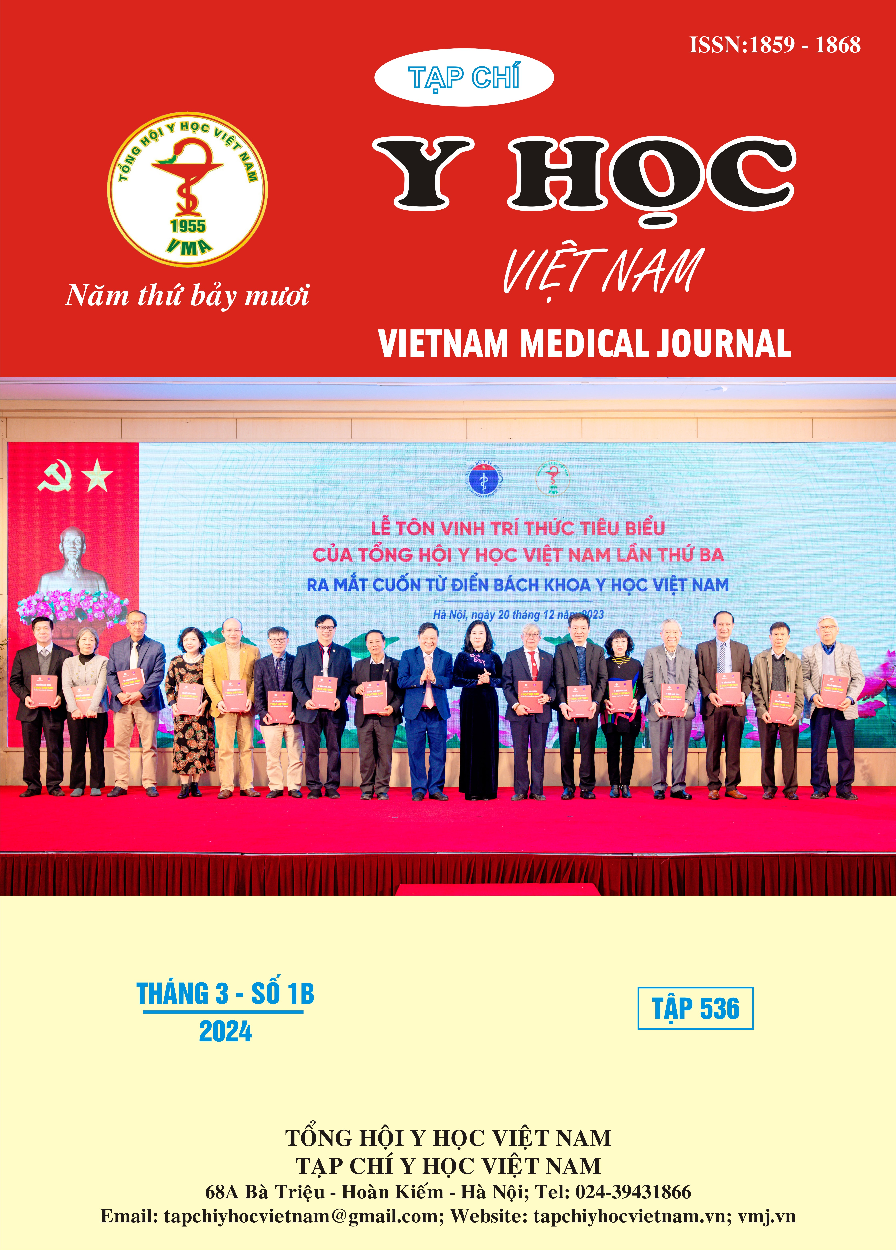EPIDEMIOLOGICAL, CLINICAL, AND PARACLINICAL CHARACTERISTICS AND TREATMENT RESULTS OF MULTISYSTEM INFLAMMATORY SYNDROME IN CHILDREN
Main Article Content
Abstract
Objectives: To describe the epidemiological, clinical, paraclinical characteristic and treatment outcomes of the multisystem inflammatory syndrome in children (MIS-C) related to Covid -19 at the Cardiology – Rheumatology department of Children’s Hospital 2. Methods: Descriptive case series with analysis on 105 cases diagnosed with MIS -C who were admitted for treatment at the Cardiology – Rheumatology department of Children’s Hospital 2 from November 2021 to the end of March 2022. Results: MIS -C mostly occured in children aged 5 -11, with a higher prevalence in males. Clincal symptoms: fever (100%), gastroinstestinal symptoms (90,5%), red eye (80,9%), rash (70,5%). About a quater of the cases had severe presentations with hypotension or shock. Paraclinical findings showed elevated imflamatory marker (CRP, ERS, LDH, D -dimer). 50% of the patients had thrombocytopenia at diagnosis. More than two – thirds of the cases had cardiac involvement on echocardiography, including coronary artery dilation, left ventricular dysfunction, and pericardial effusion. Nearly 50% of children with MIS -C had Kawasaki -like symptoms. Treatment included IVIG, Steroids, Aspirin, and anticoagulants depending on the case. No deaths and the average hospital stay was one week. Conclusion: MIS-C occurs 4 to 8 weeks after a child has been infected with Covid-19. Therefore, when a patient presents with fever and gastrointestinal symptoms, it is important to consider MIS-C to avoid missing the diagnosis.
Article Details
References
2. N.T.N.Phung, T.T.Tran, T.H.Nguyen, T.M.T.Nguyen. Cardiovascular injury and clinical features of multisystem inflammatory syndrome in children (MIS-C) related to Covid-19 in Vietnam. Pediatrics and Neonatology. 2022;63:569-574.
3. Centers for Disease Control and Prevention. Multisystem infammatory syndrome in children (MIS-C) associated with coronavirus disease 2019 (COVID-19). 2020.
4. Capone CA, Misra N, Ganigara M, et al. Six Month Follow-up of Patients With Multi-System Inflammatory Syndrome in Children. Pediatrics. 2021;148(4):e2021050973.
5. Chakraborty A, Johnson JN, Spagnoli J, et al. Long-Term Cardiovascular Outcomes of Multisystem Inflammatory Syndrome in Children Associated with COVID-19 Using an Institution Based Algorithm. Pediatric Cardiology. 2023/02/01 2023;44(2): 367-380. doi:10.1007/ s00246-022-03020-w
6. Farooqi KM, Chan A, Weller RJ, et al. Longitudinal Outcomes for Multisystem Inflammatory Syndrome in Children. Pediatrics. Aug 2021;148(2)
7. Feldstein LR, Rose EB, Horwitz SM, et al. Multisystem Inflammatory Syndrome in U.S. Children and Adolescents. Jul 23 2020; 383(4):334-346.
8. Kaushik A, Gupta S, Sood M, Sharma S, Verma S. A Systematic Review of Multisystem Inflammatory Syndrome in Children Associated With SARS-CoV-2 Infection. The Pediatric infectious disease journal. Nov 2020;39(11):e340-e346.
9. Loke YH, Berul CI, Harahsheh AS. Multisystem inflammatory syndrome in children: Is there a linkage to Kawasaki disease? Trends in cardiovascular medicine. Oct 2020;30(7):389-396.
10. Whittaker E, Bamford A, Kenny J, et al. Clinical Characteristics of 58 Children With a Pediatric Inflammatory Multisystem Syndrome Temporally Associated With SARS-CoV-2. Jama. Jul 21 2020;324(3):259-269.


